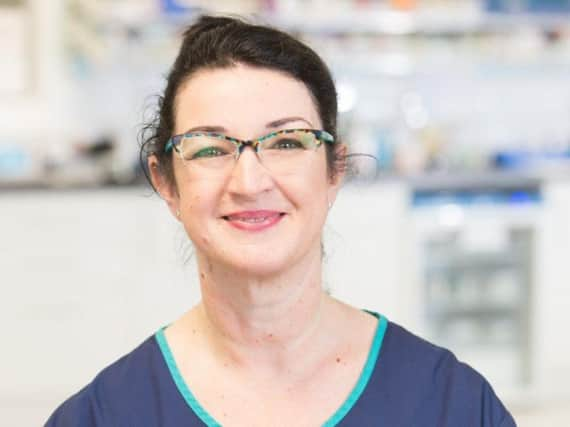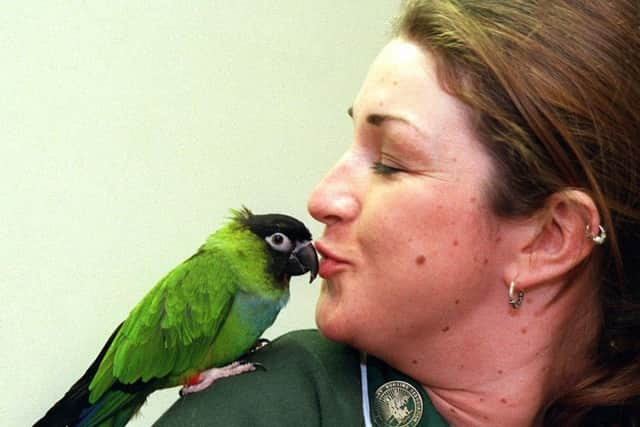Family raises questions after inquest of 'inspirational' Wigan woman who drowned in the bath


Louise O’Dwyer, a world-renowned and multi-award winning veterinary nurse, died at her Winstanley home in May this year after becoming drowsy in the bath and slipping under the water.
An inquest into the 45-year-old’s death heard how the “highly intelligent and successful” woman had been taking prescription medication after being diagnosed with anxiety and depression just weeks before she died.
Advertisement
Hide AdAdvertisement
Hide AdThe inquiry, led by coroner Alan Walsh, heard that Louise - who had been planning to give a lecture in Australia in the following weeks - had gone into the bath at around 1.30pm on May 5, Bank Holiday Sunday, but it was not until around 4pm that her partner found her unresponsive underneath the water and 5pm that the paramedics were called.


Her partner, Paul Rogerson, gave evidence at the inquest, saying that Louise would often take “lengthy baths” up to three times a day as a way to cope with the effects of her medication, a fact that her family disputed saying they weren’t aware she spent hours in the bath every day.
Paul, who moved in with Louise in December 2017, told the court that on the day before her death the couple had stayed up drinking until around 1am.
This differed from a previous statement in which he said that they had been up until 3am.
Advertisement
Hide AdAdvertisement
Hide AdThe next morning, Louise had woken up at around midday and gone downstairs. A while later she told Paul she was having a bath.
“She would take lengthy baths,” he said. “Two to three times a day. I just left her to it.”
Paul said that before she went into the bathroom, she went downstairs and made herself a “tall drink”, although he did not know what was in it.
He began watching a football match at 2pm and said he did not check on her until after the game had finished, which Mr Walsh concluded must have been at around 4pm.
Advertisement
Hide AdAdvertisement
Hide AdPaul Rogerson’s statement said that he found her at around 4.45pm.
“I went to look into the bathroom,” he said. “That’s when I found her. She was under the water. I managed to get her out of the bath.”
Paul, who looked visibly distressed whilst giving evidence, left shortly after taking the stand and did not return for the remainder of the inquest.
Louise’s dad, Brian O’Dwyer, said that there was something “not right” about the fact that the couple had been in the same house but had no contact for more than three hours.
Advertisement
Hide AdAdvertisement
Hide Ad“He was her partner.” he said. “For that length of time to pass not knowing when they were only a few feet away in an open plan house, we think that’s not right.
“The bathroom door didn’t even shut properly.”
Mr Walsh heard how Paul had told paramedics “I’ve killed her”, but the police investigation found no evidence to support this.
The probe ruled out any third party involvement, with police saying that there were “no injuries” and “no disturbances” that indicated any suspicious circumstances.
The coroner reassured the family that any inconsistencies in times given by Louise’s partner could have been caused by grief.
Advertisement
Hide AdAdvertisement
Hide AdEvidence given by Louise’s sister Alison Bradshaw described her impressive career, which saw her working as an esteemed veterinary nurse, owning practices and giving lectures around the world.
Mr Walsh learnt that the family had become concerned for Louise’s welfare in around February after she suffered a panic attack whilst giving a lecture, something that appeared to knock her confidence.
Following this, she started to exhibit signs of anxiety and depression and was diagnosed with such in April, a month before her death.
Alison said that Louise had been drinking more socially and that they had become concerned enough about her state of mind to self-refer her to the mental health team.
Advertisement
Hide AdAdvertisement
Hide AdThis was something that Paul also corroborated in his statement, saying that Louise “liked a drink”.
It was also supported by the police, who found two drinks in the bathroom after her death, one partially drunk.
The inquest heard how Louise was seen by a therapist at Pemberton Health Centre, who noted that she was “burnt out” due to a number of factors, one being how hard she worked and the other being a past relationship.
The therapist, Alan Taberner, said that he really “warmed” to Louise and was very upset to hear about her death.
Advertisement
Hide AdAdvertisement
Hide AdHe said that throughout their meeting, he established that she was not suicidal nor did she have any intention to harm herself but that a build up of issues that she had not addressed were causing her to “burn out”.
“She was troubled,” he said. “There were certain things that had been going on in her life, in her past relationships.
“We identified things that she hadn’t come to terms with.”
Following her death, pathologist, Dr Naveen Sharma, carried out a post-mortem examination which revealed a number of prescription drugs, including sleeping pill Zopiclone, Fluoxetine, and paracetamol in her system.
The investigation revealed that there were also “elevated” levels of Citalopram, which she had been prescribed and Propranolol, which had been prescribed to her partner Paul Rogerson - but neither of these were at toxic levels.
Advertisement
Hide AdAdvertisement
Hide AdDr Sharma explained that the elevated levels found in the autopsy may not have been as high at the time of her death and that they could appear “falsely elevated” in tests.
Toxicology reports also showed that Louise had 184mcg of alcohol in her blood, a level that is more than double the drink driving limit.
The pathologist said he had found “bruising” to her chest which could have been consistent with CPR, but was definitely not suspicious.
He concluded that she had died from immersion in water caused by mixed alcohol and prescription drug toxicity.
Advertisement
Hide AdAdvertisement
Hide AdAfter considering all of the evidence, Mr Walsh concluded that Louise had died by “misadventure”, an intentional act with unintentional consequences.
He said that there was no third party involvement in her death, nor did she intend to take her own life.
Mr Walsh said that the panic attack at the lecture was indicative of “burn out” and that this knocked her confidence causing her to suffer from anxiety and depression, which were treated with a number of drugs.
“Louise enjoyed a drink socially,” he added. “She didn’t have an alcohol problem, she didn’t have any addiction, she enjoyed a social drink.”
Advertisement
Hide AdAdvertisement
Hide AdHe said that the combination of the prescription drugs and the alcohol in her system had caused her to become drowsy and she had fallen asleep in the bath.
“Louise, was very intelligent academically but also practically,” said Mr Walsh.
“She was world-renowned for her achievements and abilities to teach. It is a tragic death. She had achieved so much and had more to give.”